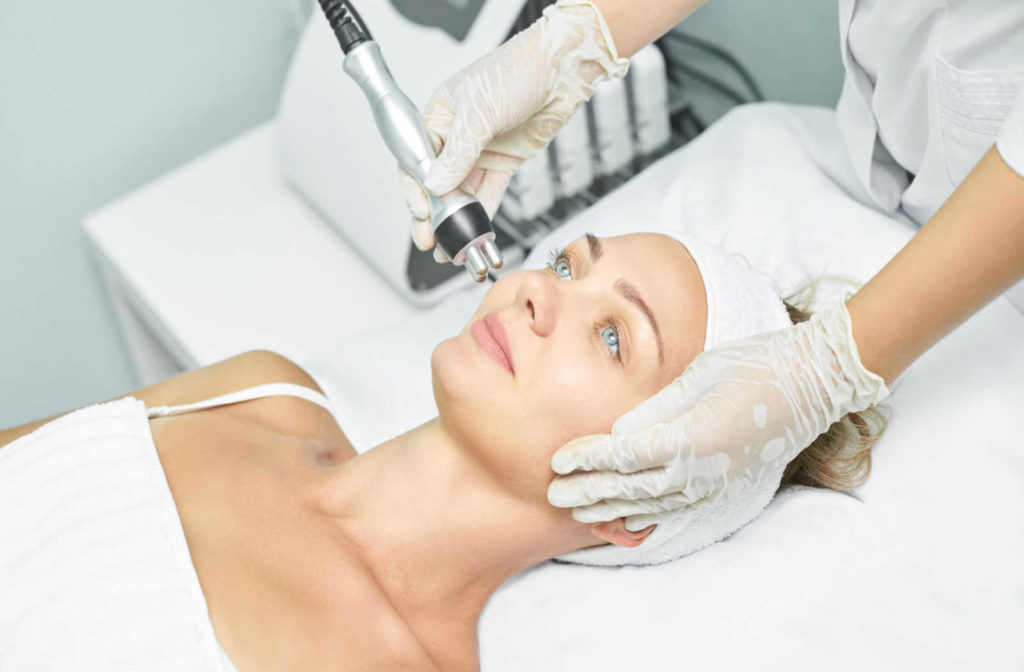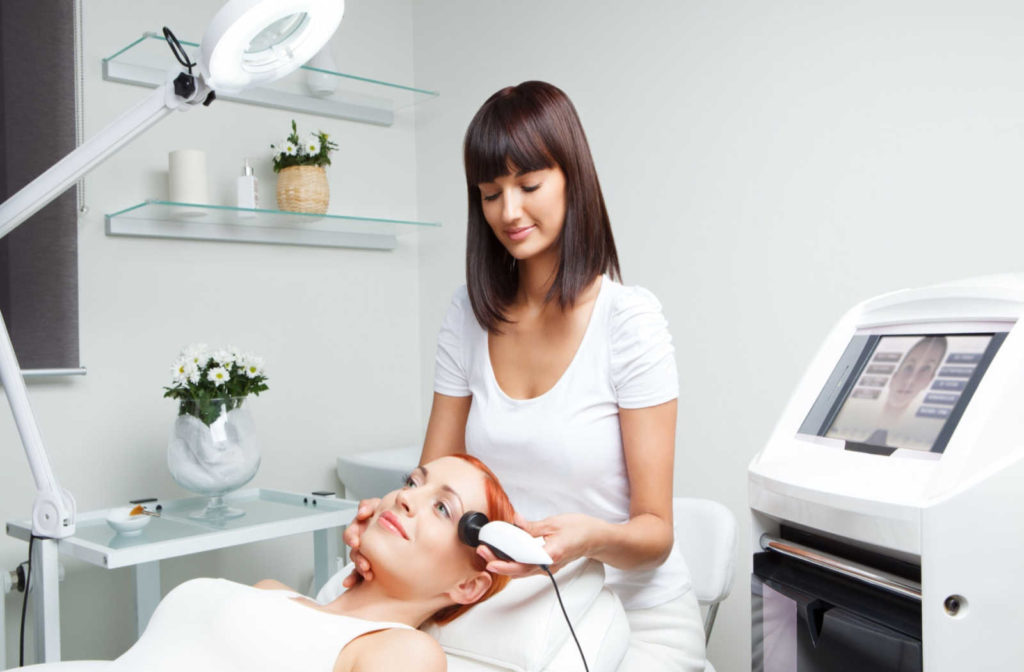Radiofrequency for Dry Eye Treatment
Dry eyes result from the inability to maintain normal tear film to coat the eyes. When there isn’t enough moisture or tears evaporate too quickly, symptoms are typically discomfort, pain, redness, and inflammation in the eyes.
Dry eye is a common condition that affects almost everyone. Meibomian gland dysfunction (MGD) is one cause of dry eyes where less oil secreted by the glands result in tears evaporating more quickly.
A dry eye exam by your optometrist can identify dry eye symptoms and intervene with early treatment to prevent damage to the corneal tissue. For the treatment of dry eyes caused by meibomian gland dysfunction, In Focus Eyecare offers radiofrequency (RF) for long-term relief of symptoms. Read on to learn more about dry eyes, MGD, and RF.
Meibomian Gland Dysfunction & Dry Eye
Dry eyes are from insufficient tears or low-quality tears with improper chemical composition. Low tear production is when your eyelids and glands can’t produce enough tears to keep the eyes moist.
Normal tears contain oil, water, and mucous. Poor quality tears result in an unstable tear film that causes tears to evaporate or dry out more quickly.
Dry eye symptoms include:
- Irritation or discomfort
- Scratchy or stinging sensation
- Blurred vision
- Sensitivity to light.
- Eye pain
- Burning or itchy eyes
The meibomian glands in the eye are tiny glands in the eyelids that make and secrete the oily layer that makes up the tear film. Changes in the glands, amount of oil, and quality lead to meibomian gland dysfunction.
Causes of MGD include:
- Age: As you age, the number of meibomian glands decreases
- Contact lens wear
- Medical issues: High cholesterol, allergic conjunctivitis, blepharitis, infection, autoimmune diseases
- Medications: Estrogen therapy and retinoids
Obstructive MGD is when the glands become clogged with thick secretions, so less oil reaches the eye. It can cause symptoms of dry eye in addition to the following:
- Crusty discharge
- Watery eyes
- Foreign body sensations like a grain of sand or dust in the eye
- Inflammation of the eyelid or Blepharitis
- Redness

RF Treatment for Dry Eye
Diagnosing dry eye requires an exam by your optometrist. They will inspect your glands, the opening of the gland, and squeeze oil out. They may also test to measure the quality of the tears or oil.
They are then able to tailor a treatment approach specifically for your eyes. Treatments for dry eye usually include artificial tears, plugs to block drainage, medication, and prescription eye drops.
At-home treatments also include warm compresses, but these only provide temporary relief. An in-office treatment approach works best for moderate to severe cases of MGD.
For patients with meibomian gland dysfunction, proven and innovative technologies help with the long-term relief of dry eye symptoms. Radiofrequency treatment is one of them.
What Is Radiofrequency?
The use of radiofrequency is not new. Dermatology and aesthetics industries have used RF therapy for skin tightening and treating signs of aging. It stimulates collagen production to tighten skin, minimize fine lines and wrinkles, and a droopy appearance.
RF for dry eyes uses radiofrequency or high-frequency electric currents to gently warm, relieve blocked glands, and stimulate working glands to function better. Your eye doctor will apply a soothing gel to the treatment area, usually on the upper eyelid and the skin beneath the lower eyelid.
The gentle massage and warming sensation remove any obstruction in the channels in which the oil travels and increases the quality of the tears. After heating the glands, your eye doctor may massage them to express more oil.
RF also reduces inflammation, provides some immediate relief of symptoms, and is beneficial for preventing chronic dry eyes. It has several advantages:
- It’s a non-invasive procedure
- It’s safe and comfortable
- It’s quick
- It’s painless
- There is no downtime
Treatment time varies between 10 to 30 minutes per session. Your eye doctor may recommend several treatment sessions for significant improvement of symptoms. After the treatment, some patients may experience redness in treatment areas and mild swelling. These should only last a few hours.
Radiofrequency for Dry Eyes
Dry eye disease affects 30% of Canadians, and treatment is essential to avoid chronic dry eyes and damage to the eyes. RF can improve the functioning of the meibomian glands and alleviate dry eye symptoms.
If you have symptoms of dry eyes but are not entirely sure, take our dry eye quiz or call In Focus Eyecare today to book your dry eye exam. We can evaluate your eyes and create a treatment plan customized to your symptoms.





